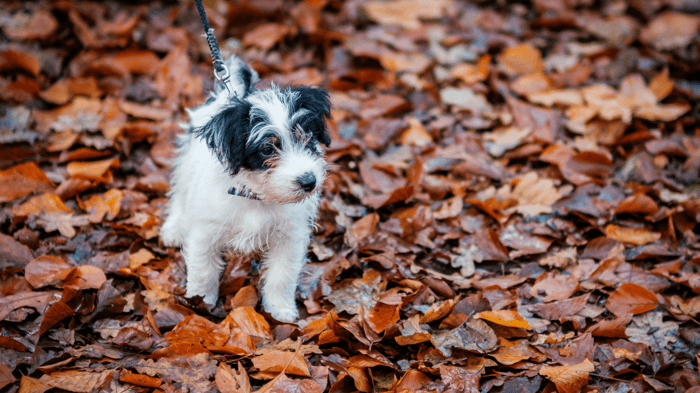Separation anxiety in toy breeds can feel like a storm in a teacup—small dog, big panic. You leave the room and the soundtrack starts: barking, whining, scratching at doors, pacing in tight loops, even drooling.
That isn’t spite. It’s fear, and it hits tiny dogs hard.
Maybe you’re thinking, “I’ve tried longer walks and extra toys, and nothing sticks.” Fair. It’s confusing. Is this separation anxiety, boredom, or a health issue hiding in the background? You want calm, not chaos. You want a plan you can trust—and one that fits a small body with big feelings.
This guide keeps it humane, specific, and measurable.
We’ll cover what actually works for small dogs: a step-by-step training ladder, easy home setup, smart enrichment, and clear checkpoints so you know when to advance. We’ll also flag common health issues in toy breeds that can amplify stress—and how to prevent them.
Quick promise: you’ll start with a fast self-check to confirm what’s really going on, then build progress in minutes, not miles. Ready to turn panic into peace—gently and for good? Let’s begin.
Quick Self-Check: Is It Separation Anxiety?
First, name the pattern. Panic is fast, specific, and relief-based.
- Likely separation anxiety: distress starts within minutes of departure cues (keys, shoes, bag), escalates when alone, then drops the second you return. Common signs: nonstop vocalizing, door scratching, pacing, drooling, refusing food.
- Maybe boredom/isolation distress: improves with a midday walker or companion, settles when novelty appears (new chew, puzzle, snuffle mat), and doesn’t spike at the sight of keys.
- Rule out medical: pain, GI upset, urinary infections, and airway issues in toy breeds can look like anxiety. If appetite dips, accidents are new, or breathing sounds effortful, book the vet first.
 Two fast actionables (do these this week):
Two fast actionables (do these this week):
- 3-day video audit: set a camera, start a timer as you leave. Log three numbers: time to first vocalization, peak intensity, recovery after return. You want data, not guesses. Really analyze the separation anxiety from a purely observational level.
- Cue test: pick up keys/coat repeatedly without leaving. If distress starts before the door opens, departure cues are loaded; we’ll defuse them.
About tools: cameras, white noise, food puzzles, and clear cues help. If you use a tiny training collar for small dogs, stick to tone or gentle vibration as calm “start/stop” markers—paired with praise and food. Guidance, never punishment.
Why Toy Breeds Are Vulnerable
Separation anxiety hits small dogs hard for three simple reasons: wiring, body, and lifestyle.
1) Wiring (temperament). Many toy breeds were selected to stay close—alert, people-focused, quick to notice tiny changes. That vigilance is useful…until a closed door turns it into worry.
2) Body (physiology). Faster heart rate, faster arousal, and smaller calorie reserves mean emotions rise quickly and burn hot. Energy peaks sooner; recovery can take longer if panic ignites.
3) Lifestyle (human habits). Being carried, constant lap time, and near-zero solo moments create a pattern: together = safe, alone = danger. Inconsistency (home all weekend, gone all Monday) seals the association.
Action you can take today:
- Independence moment #1: Place a mat, scatter a few crumbs, and move room-to-room for two minutes while the dog stays. Return before worry starts.
- Independence moment #2: Same setup, but add soft background sound and a low-value chew. Vary your distance; keep it easy and calm.
Small, predictable, low-drama reps teach a new story: alone can be okay. Now that we know why the spiral starts, let’s set the stage so training actually works.
Set the Stage: Environment & Safety
Before training, make the room do half the work.
5-item setup checklist to reduce separation anxiety.
- Zone chosen: a gated nook or a quiet room—not a crate if the crate predicts panic, keep temperature steady; exit path clear.
- Traction down (runners, yoga mats); no slick landings.
- Brown noise on; volume low and steady.
- Chew + snuffle ready (nothing so exciting it becomes a departure cue).
- Camera tested: place a camera at chest height, angled to see the door and the dog’s whole body; timestamp visible.
Using the camera, you’ll watch two numbers: latency to first stress sign and recovery time after you return.
15-minute “dress rehearsal,” no leaving yet:
Minute 0–3: settle on mat, brown noise on.
Minute 3–8: you move room-to-room; dog stays, easy chews available.
Minute 8–12: quietly handle keys/coat; reward calm.
Minute 12–15: sit, water, soft praise.
Using a tiny training collar for small dogs can mark “settle” and “all done” as neutral cues—paired with food, never punishment.
The Training Ladder (Desensitization + Counter-Conditioning)
This is the engine of change: tiny, repeatable reps that never cross the panic line. You’ll progress only when calm is easy, not when luck gets you through.
Baseline (find the threshold).
Set the camera. Do a normal mini-departure. Start a timer as you touch the door. Note the time to first stress sign (whine, pacing, fixed stare, door focus) and recovery time after you return. That first number is your ceiling—for now.
The Ladder
- Level 1 — Micro-departures (in sight). Touch the knob → let it go. Open/close the door. Step out, step back in immediately. Run 3–5 reps, pausing between each. End before you see distress; success = boredom.
- Level 2 — Seconds out of sight. Step into the hall and count 2–5 seconds. Vary the timing (2, 4, 3, 5). Do short hallway loops that bring you right back. Randomization prevents prediction spikes.
- Level 3 — Brief building exits. Out the door, into the stairwell/mailbox area, no elevator yet (too long, too noisy). Keep durations short, return calmly, no fanfare.
- Level 4 — Actual departures. Grow in tiny bands: 1–3 minutes → 5–7 → 10–12, always staying below threshold. If yesterday’s calm max was 6 minutes, today’s targets cap at ≤70% of that (about 4 minutes) for multiple easy wins, then inch up.
Pairing (avoid cue poisoning).
Place calm chew/scent work after you leave, not before. If the good stuff appears only when you go, it can become a departure cue. Rotate items so novelty stays neutral.
Logging (data beats vibes).
Track: duration, first stress sign time, peak intensity, recovery, and one note (time of day, neighbor noise, hunger). You’ll spot patterns that guide your next step.
Reset-day protocol (after a bad rep):
Stop. Do three Level 1 successes. Short sniff-walk or puzzle. Tomorrow, resume at the last easy level.
Remember, you’re stacking calm, not chasing minutes.
Reinforcement & Enrichment Plan
Anxious systems settle with rhythm, not random. Keep days predictable and easy. This will reinforce thought patterns to reduce separation anxiety.
Micro-routines to anchor calm:
- Short, easy walk for sniffing—not speed.
- 3–5 minutes of trick practice (sit, spin, nose-target).
- Chew or snuffle session to lower arousal.
Fuel for small engines:
- Small, frequent meals to prevent dips.
- Fresh water; low-salt hydration broths sparingly.
- Skip sugary add-ons; avoid sudden calorie spikes.
10-minute pre-departure:
Minute 0–2: normal lights, quiet vibe.
Minute 2–5: brief trick set; scatter a few kibbles.
Minute 5–7: calm petting, then neutral.
Minute 7–10: settle on mat; you move room to room.
5-minute post-return
Mat greet, water, then a slow snuffle—no hype.
If you use a tiny training collar for small dogs, keep it gentle: tone or gentle as simple “start/settle” markers, always paired with food or praise. Consistent signals plus steady routines regulate the nervous system.
Tools & Tech That Help (Used Positively)
Support tools make training clearer; they’re not shortcuts.
Core helpers:
- Camera/app to track latency to first stress and duration calmly alone.
- Brown noise (or a fan) for sound masking.
- Treat timers/dispensers to schedule easy wins after you leave.
- Pheromone diffusers for background calm.
- Daytime collar (snug, two-finger fit) for IDs; gentle harness for smooth, low-arousal exits.
Important note: Avoid punishment tools for anxiety. If using any collar-based cue, keep it positive and predictable (neutral chime, then food/praise).
Set-it-once list (5-minute setup)
- Plug in diffuser; start brown noise.
- Place camera at chest height; confirm timestamp.
- Load dispenser; schedule first drop post-departure.
- Fit collar/harness; test comfort and ID tags.
- Do a 60-second walk-through to ensure nothing startles on exit.
 What Doesn’t Work (and Why)
What Doesn’t Work (and Why)
Skip the shortcuts that backfire when trying to ease separation anxiety.
- “Cry it out,” flooding, surprise long departures → this sensitizes tiny dogs. Panic rehearsed is panic strengthened. Do instead: build time in easy, sub-threshold steps; many calm reps beat one long “test.”
- Inconsistent schedules and only leaving high-value food when you go → those items become departure cues. Do instead: offer similar chews at random calm times, and keep a light, repeatable pre-exit routine.
- Over-crating when the crate predicts distress → confinement can equal isolation. Do instead: create a safe zone (gated space, traction, brown noise) and recondition the crate so it predicts rest, not absence.
- Punishment or startle-based tools for anxiety (yelling, shake cans, harsh collars) → spikes arousal and delays recovery. Do instead: if using tech, choose guidance: a tiny training collar for small dogs set to tone or gentle vibration only as neutral cues, always paired with food/praise. The collar marks “start/settle”; it never corrects fear.
- Rushing criteria because “yesterday was good” → progress whiplash. Do instead: cap today’s targets at ≤70% of yesterday’s calm best, then inch up.
Save time, money, and heartache by trading drama for data and big leaps for steady wins.
Metrics, Timelines, and Plateaus
Progress is real when numbers move, even a little. Track three:
- Time to first stress sign (whine, door focus, pacing).
- Peak intensity (mild → moderate → frantic).
- Recovery time after you return.
Typical arc:
- Days 1–10: tiny gains—seconds become longer seconds.
- Days 10–21: steadier holds; calmer recoveries.
- Plateaus: normal. Bodies consolidate skills before they climb.
Actionables this week:
- Weekly graph: one line per metric. Seeing the slope keeps you motivated.
- Plateau protocol: drop departure duration by 30–40%, add easier reps (Level 1–2), and switch time of day. Return to prior durations only after three effortless sessions.
- Note context: neighbors’ noise, mealtime, weather; patterns predict wins.
You’re building capacity, not chasing records. Next question to solve: what if neighbors complain while you’re still training?
Budgeting & Cost-Savers
Smart choices keep progress steady and costs sane.
DIY enrichment: roll kibble in a towel “snuffle burrito,” scatter in a cardboard maze, freeze broth-diluted kibble in silicone molds.
Borrow/share: a baby monitor works as a camera; split a midday walker with a neighbor; buy used gates/ramps from local groups.
Prioritize spend: vet rule-out → trainer sessions → gadgets. Health clarity first, skilled coaching second, tools last.
One-page budget list: must-haves (camera, mats, chews), nice-to-haves (treat timer, diffuser), skips (duplicative toys).
Buy once, cry once: stuzy gate, quiet white-noise machine, comfortable harness. Durable, quiet, safe—cheaper over time.
When to Loop in Pros (Vet + Trainer)
Right help at the right time prevents stall-outs.
Red flags: panic within seconds, self-injury, refusal to eat for hours, or zero progress after 2–3 weeks of correct training.
Vet first: rule out pain or airway issues; discuss meds when warranted—daily options like fluoxetine or clomipramine, situational aids like trazodone or gabapentin. These support training; they’re not shortcuts.
Trainer/behavior consultant: choose someone experienced with separation-anxiety protocols; remote coaching works well because departure drills happen at home.
Bring to appointments:
- Your log (durations, first stress sign, recovery).
- Short videos from the camera.
- Daily schedule and pre-departure routine.
- Medical history, diet, current supplements/meds.
Momentum, Not “The End”
Pick your starting level today; log one number; repeat tomorrow. Small wins are the plan. Ten calm seconds become twenty, then minutes. You’re not chasing perfection—you’re building capacity.
Start in 10 minutes:
- Safe zone set: mat, traction, brown noise.
- Camera on: timer ready, angle to door and dog.
- Run three micro-departures below threshold; end on a win.
Ready when you are: mat, timer, calm—go.

